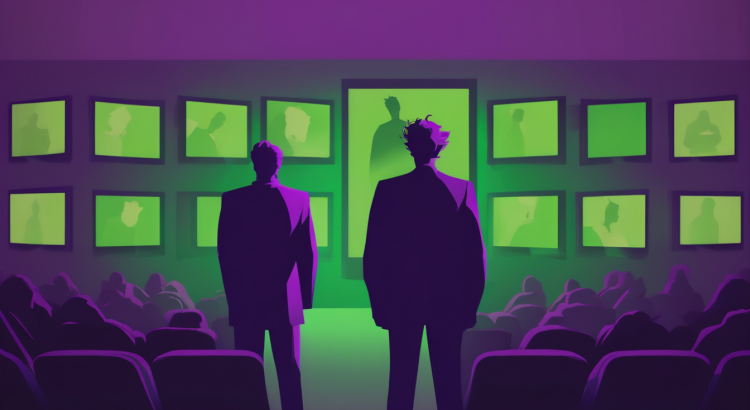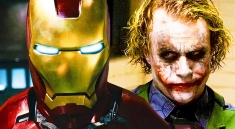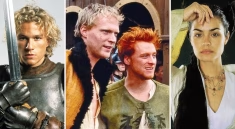Heath Ledger Central highlights how the evolution of Joker portrayals after Heath Ledger reshaped comic-book villains in modern cinema and television.
Heath Ledger’s Benchmark and Its Lasting Shadow
Heath Ledger’s performance in “The Dark Knight” set a brutal new standard for the character. His Joker felt disturbingly real, grounded in psychological chaos instead of cartoonish crime.
The role showed studios that comic-book villains could anchor serious, prestige-level storytelling. As a result, the evolution of Joker portrayals became a creative battleground for actors and directors.
Ledger’s posthumous Oscar win also changed expectations. Future Jokers could not simply copy his style. They had to react to it, reject it, or deconstruct it.
Redefining Madness: From Crime Clown to Cultural Symbol
After Ledger, the character shifted from a simple nemesis into a broader symbol. The evolution of Joker portrayals leaned into themes of societal breakdown, alienation, and extremism.
Storylines began exploring mental health, class conflict, and media exploitation. However, this thematic expansion brought new risks. Some feared these darker Jokers could be misread as antiheroes rather than cautionary figures.
On the other hand, this complexity kept the character relevant. Each new version became a reflection of its cultural moment, not just a recycled villain.
Jared Leto’s Joker in Suicide Squad
Jared Leto’s interpretation in “Suicide Squad” aimed to escape Ledger’s shadow through radical style. The evolution of Joker portrayals here turned toward a flashy, gangster-inspired design, complete with tattoos and grills.
The performance leaned into unpredictability and menace, but reactions were sharply divided. Some viewers appreciated the attempt at modernization. Others felt the character lacked depth beneath the stylized surface.
Nevertheless, Leto’s Joker showed how far Warner Bros. was willing to experiment. The studio was ready to risk backlash in search of a distinct identity.
Joaquin Phoenix and the Character Study Approach
“Joker” (2019), starring Joaquin Phoenix, pushed the evolution of Joker portrayals into pure character study territory. The film removed Batman entirely and focused on one troubled man’s descent.
Phoenix’s Joker was fragile, isolated, and slowly radicalized. His performance earned another Oscar, reinforcing the idea that this villain can support serious drama.
In addition, the movie raised debates about responsibility, violence, and representation. It blurred the line between empathy and condemnation, forcing audiences to confront their own reactions.
Read More: A comprehensive history of Joker in film and television
Animated Interpretations After Ledger’s Influence
The evolution of Joker portrayals also appears clearly in animation. Performers like Mark Hamill had already defined the role in earlier decades. After Ledger, animated Jokers often became darker and more nuanced.
New series and films experimented with quieter menace, subtle humor, and more complex motivations. Voice actors balanced comic timing with psychological weight, reflecting the expectations set by live-action versions.
Therefore, even family-friendly formats started acknowledging the character’s layered nature. Jokers in animated projects felt less like simple clowns and more like dangerous, if stylized, anarchists.
Television and Elseworld Variations
Television embraced the evolution of Joker portrayals through indirect and alternate takes. Shows like “Gotham” teased proto-Joker figures, exploring how a chaotic personality might emerge in a corrupt city.
Elseworld-style series and streaming projects sometimes avoided the Joker’s name but borrowed his energy. They focused on cults, chaos, and performative violence inspired by the character’s legacy.
Meanwhile, these versions allowed writers to test ideas without colliding with big-screen canon. The flexibility kept the archetype fresh for long-form storytelling.
Design, Makeup, and Performance Choices
Each new actor faces choices about look, movement, and voice. The evolution of Joker portrayals is visible in their makeup, costumes, and physicality.
Ledger’s smeared paint suggested a self-applied mask. Leto’s tattoos hinted at a criminal subculture. Phoenix’s clown makeup connected him to working-class entertainment and public humiliation.
As a result, design became part of the psychological portrait. Every visual element communicated status, history, and intent before the character even spoke.
Audience Reception and Cultural Impact
Audience reaction shapes how studios treat the role. The evolution of Joker portrayals is partly driven by fan praise, controversy, and online discourse.
When a performance lands, it can redefine expectations for years. When it fails, the next creative team usually pivots in the opposite direction.
Nevertheless, the character remains magnetic. People continue debating which Joker feels most authentic, most terrifying, or most meaningful.
The Future Direction of Joker Interpretations
Looking ahead, the evolution of Joker portrayals will likely move toward greater variety. Multiverse storytelling allows several Jokers to coexist, each shaped by different tones and audiences.
Some versions may lean into horror, while others return to dark comedy or pulp crime. After that, creators might even explore quieter, more tragic lenses.
In any case, the evolution of Joker portrayals shows no sign of slowing. As new actors reinterpret this chaotic icon, the character will keep mirroring the fears and fascinations of each generation.
For deeper context, fans can revisit how the evolution of Joker portrayals intersected with changing trends in superhero cinema and prestige drama, proving that a single villain can carry endless reinventions.
Amid shifting styles, the evolution of Joker portrayals continues to challenge performers, provoke audiences, and redefine what a comic-book antagonist can be.
Across film, television, and animation, the evolution of Joker portrayals remains a compelling study in character reinvention, creative risk, and cultural reflection, ensuring that this chaotic figure never truly feels finished.
Within this ongoing creative arms race, one thing is clear: the evolution of Joker portrayals will keep testing the line between entertainment, discomfort, and unforgettable cinematic art.
Fans who track every new take can follow the evolution of Joker portrayals as it reshapes expectations for villains, storytellers, and the comic-book genre itself.



